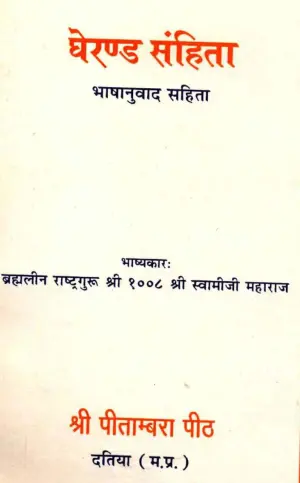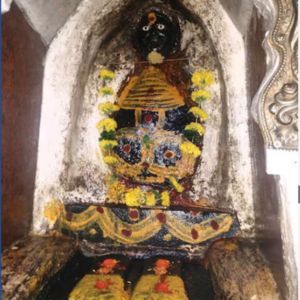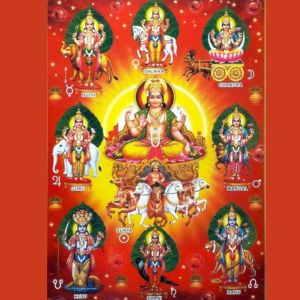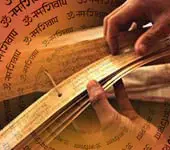You Should Contemplate Upon Every Step In The Yajna
Only audio above. Video below.
Quiz
Which is the Purana that focuses of life after death?Transcript
(Click here to read more)
Darshapurnamaseshti the fortnightly Vedic yagas conducted in connection with amavasya and purnima. Kusha grass is laid all around the Agni kundas in the yaga vedi and five pairs of vessels used in the procedure are kept on top of the grass. These pairs are: Shoorpa and Agnihotra havani - Shoorpa is winnow and havani is the ladle with which daily agnihotra is performed. Sphya and Kapalas - Sphya is a wooden sword and kapalas are small earthen cups. Shamya and Krishanjina - Shamya is a wooden peg used as support for the grinding sto....
Transcript
(Click here)
Darshapurnamaseshti the fortnightly Vedic yagas conducted in connection with amavasya and purnima.
Kusha grass is laid all around the Agni kundas in the yaga vedi and five pairs of vessels used in the procedure are kept on top of the grass.
These pairs are:
Shoorpa and Agnihotra havani -
Shoorpa is winnow and havani is the ladle with which daily agnihotra is performed.
Sphya and Kapalas -
Sphya is a wooden sword and kapalas are small earthen cups.
Shamya and Krishanjina -
Shamya is a wooden peg used as support for the grinding stone and Krishnajina is deer skin.
Ulukhala and musala -
Mortar and pestle used for dehusking and polishing paddy with which the offering called purodasha is made.
Drishad nd Upala -
Grinding stone and a roll with which rice is powdered.
One of the offerings in Darshapurnamasheshti is purodasha, something like a rice cake.
For this, paddy is dehusked and polished with mortar and pestle keeping them on top of the deer skin.
Then the rice thus made is powdered with the grinding stone and roll.
This rice powder is then fried and mixed with hot water to make a tortoise-shaped cake out of it.
This is called purodasha.
Now everything has significance in yaga.
Why ten such utensils?
This number ten has special significance in the Vedic context.
The meter, chhandas Virat has got ten syllables in it.
दशाक्षरो वै विराट्
The very first yajna is Jyotshtoma.
एष वाव प्रथमो यज्ञो यज्ञानां यज्ज्योतिष्टोमः
In Jyotishtoma, 190 mantras are employed as praises.
They are divided into 10 groups of 19 mantras each.
Here also the same number, ten.
These ten utensils are placed as five pairs.
Why pair?
Two reasons:
Two is stronger than one.
Two people doing a task together makes it easier rather than someone doing it alone.
Also, yaga is a creative process.
Creation, particularly procreation involves a pair, a male and a female.
Such understanding and contemplation about every step in the yaga is important for its success.
Recommended for you
घेरण्ड संहिता

एक समय, योगभ्यास करने की इच्छा वाले साधक चण्डकापालि नामक �....
Click here to know more..The Unique And Fascinating Jharni Narasimhaswamy Temple, Bidar

A unique temple where devotees wade through water inside a 300 m cave to get a glimpse of Narasimhaswamy*....
Click here to know more..Navagraha Peedahara Stotram

ग्रहाणामादिरादित्यो लोकरक्षणकारकः। विषणस्थानसंभूतां ....
Click here to know more..
English Topics
Vedas
Click on any topic to open
- 85 Culture vis-a-vis Agriculture
- 84 Whenever I have Read any Part of the Vedas
- 83 Vedas - Holy Books Of Hinduism
- 82 How The Vedas Manifested Into Material Objects
- 81 What does Rigveda contain?
- 80 Why Vedas are called Shruti?
- 79 What Vedas say about periods
- 78 How Vedas Came Into Existence
- 77 Vedas are eternal, not written by anyone
- 76 Relationship Between The Vedas And The World
Please wait while the audio list loads..
30
Ganapathy
Shiva
Hanuman
Devi
Vishnu Sahasranama
Mahabharatam
Practical Wisdom
Yoga Vasishta
Vedas
Rituals
Rare Topics
Devi Mahatmyam
Glory of Venkatesha
Shani Mahatmya
Story of Sri Yantra
Rudram Explained
Atharva Sheersha
Sri Suktam
Kathopanishad
Ramayana
Mystique
Mantra Shastra
Bharat Matha
Bhagavatam
Astrology
Temples
Spiritual books
Purana Stories
Festivals
Sages and Saints

